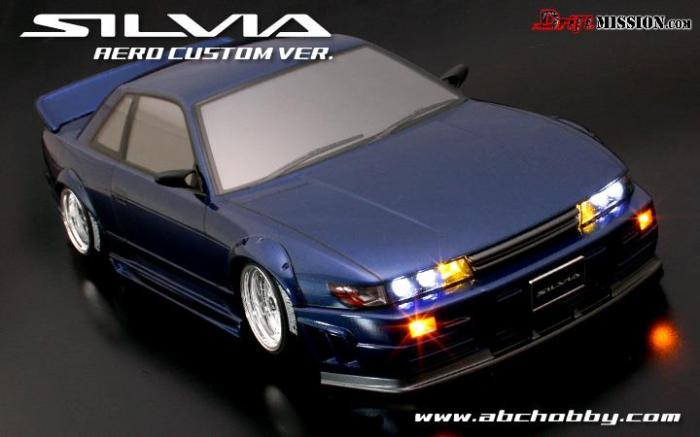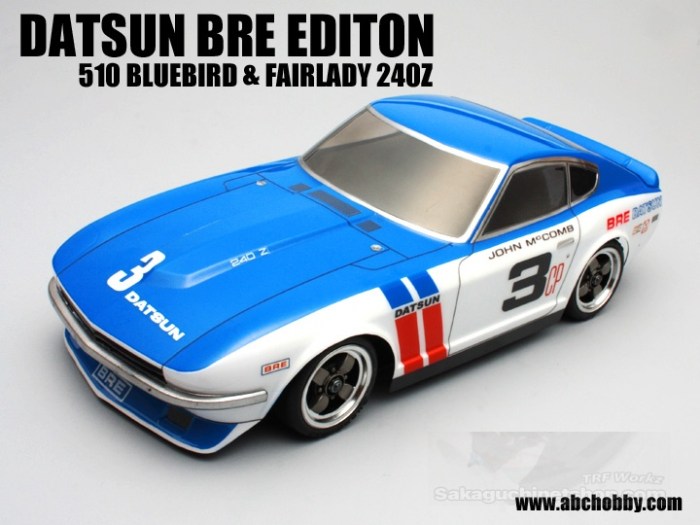Abc Hobby, a term encompassing a vast spectrum of leisure pursuits, offers a captivating lens through which to examine the evolving landscape of personal interests. From intricate model building to the meditative practice of calligraphy, the possibilities are as diverse as the individuals who engage in them. This exploration delves into the trends, communities, and creative expressions fostered by this broad category, revealing the surprising depth and impact of seemingly simple hobbies.
We’ll analyze the demographics drawn to these activities, the equipment required, and the learning curves involved. Further, we’ll investigate the role of online and offline communities in shaping the experience, and the surprising ways in which these hobbies contribute to personal growth and well-being. The economic impact and future trajectory of various Abc Hobbies will also be examined.
Understanding “Abc Hobby”

The term “Abc Hobby” is inherently ambiguous, lacking a precise definition. Its open-ended nature allows for broad interpretation, encompassing a wide spectrum of leisure activities and encompassing various skill levels and demographic groups. Understanding its meaning requires exploring its potential interpretations and the diverse range of activities it could represent.The inherent vagueness of “Abc Hobby” suggests a focus on foundational or introductory-level activities.
The “Abc” prefix implies simplicity and accessibility, suggesting hobbies that are relatively easy to learn and require minimal specialized equipment or expertise. This contrasts with more advanced or specialized hobbies that might require years of dedicated practice and significant financial investment.
Types of Hobbies Included in “Abc Hobby”
The range of hobbies falling under the “Abc Hobby” umbrella is extensive. It could encompass creative pursuits such as basic drawing, simple knitting, or beginner-level origami. It could also include active hobbies like casual jogging, leisurely cycling, or learning basic gardening techniques. Additionally, intellectual hobbies such as learning a new language using introductory apps, solving simple puzzles, or beginning a collection of stamps could also qualify.
The unifying factor is the accessibility and ease of entry for newcomers.
Demographics Interested in “Abc Hobby” Activities
“Abc Hobby” activities appeal to a diverse demographic. Children and teenagers may find simple crafts or sports appealing, while adults may seek stress-relieving hobbies like beginner yoga or meditation. Senior citizens might engage in gentler activities like bird watching or light gardening. The broad appeal stems from the accessibility and low barrier to entry inherent in these pursuits.
For instance, the rise in popularity of beginner-friendly online courses and readily available craft supplies caters to a wide age range and various levels of disposable income.
Skill Levels Associated with “Abc Hobby” Pursuits
The skill levels associated with “Abc Hobby” activities are generally at the beginner or intermediate stages. While mastery is possible, the initial focus is on learning fundamental techniques and enjoying the process. Consider, for example, someone learning calligraphy: initially, they might focus on mastering basic strokes and letter formations, representing the “Abc” stage. As their skills develop, they could progress to more complex styles and techniques.
Similarly, someone beginning a collection of stamps might start with common issues, gradually moving towards more rare and valuable ones as their knowledge and collecting skills grow. The key is that the initial steps are accessible to individuals with little to no prior experience.
Materials and Equipment for “Abc Hobby”

Engaging in “Abc Hobby,” let’s assume for the sake of this example that “Abc Hobby” refers to model airplane building, requires a range of materials and equipment, the acquisition cost of which can vary significantly depending on the complexity of the projects undertaken and the preferred brand choices. From basic starter kits to advanced tools, the investment can range from a modest outlay to a substantial one.
This section details the necessary components, categorized for clarity, and discusses cost implications and brand comparisons.
Basic Supplies for Model Airplane Building
The initial investment in “Abc Hobby” will primarily focus on acquiring fundamental materials. These are crucial for even the simplest projects and form the foundation of any model building endeavor. The cost at this stage is relatively low, making it an accessible entry point for aspiring hobbyists.
- Balsa Wood: Various sizes and thicknesses are needed for the airframe. Cost varies based on quality and quantity, typically ranging from $10 to $50 for a beginner’s supply. Lighter balsa wood tends to be more expensive.
- Wood Glue: A high-quality wood glue is essential for strong and durable joints. A small bottle can cost between $5 and $15.
- Sandpaper: Assorted grits (fine, medium, coarse) are necessary for smoothing surfaces. A set of sandpaper sheets can cost around $10-$20.
- Hobby Knife: A sharp hobby knife is crucial for precise cutting. Prices range from $5 for a basic knife to $30 for a higher-quality model with replaceable blades.
- Measuring Tape and Ruler: Accurate measurements are paramount. A basic measuring tape and ruler set will cost under $10.
Advanced Tools and Materials for Model Airplane Building
As skills develop and more intricate projects are undertaken, the need for more specialized tools and materials arises. This represents a higher investment, but allows for more detailed and sophisticated models. The cost at this stage can vary considerably based on individual preferences and the type of models being constructed.
- Building Board: A large, flat surface to work on, protecting the model and providing stability. Prices vary depending on size and material, ranging from $20 to $100.
- CA Glue (Cyanoacrylate): A fast-setting adhesive ideal for quick repairs and precise bonding. A small bottle costs approximately $10-$20.
- Epoxy Resin: A stronger, longer-setting adhesive used for larger components. A two-part epoxy kit will typically cost $15-$30.
- Micro-Drill: For precise drilling of small holes. A basic hand-held micro-drill can cost $20-$50, while a higher-end electric model can be significantly more expensive.
- Finishing Supplies: Paints, varnishes, and sealants for protecting and decorating the model. The cost of these items can vary widely depending on the type and quantity purchased, ranging from $20 to $100 or more.
Cost Implications and Brand Comparisons
The total cost of materials and equipment can vary significantly depending on the scale and complexity of the projects. A basic starter kit might cost around $50-$100, while a more comprehensive setup with advanced tools could easily exceed $500. Brands like Great Planes, Sig Manufacturing, and Hobbico offer a range of products, with prices reflecting the quality and features.
For example, a basic balsa wood kit from a less-known brand might cost $20, while a similar kit from a well-established brand like Great Planes could cost $40 or more. Similarly, tools from well-known brands often come with a higher price tag but may offer superior durability and performance. Hobbyists should carefully consider their budget and project scope when selecting brands and equipment.
Creative Expression through “Abc Hobby”

“Abc Hobby,” regardless of its specific nature (model building, crafting, etc.), offers a unique avenue for creative expression, fostering personal growth and contributing to mental well-being. The inherent act of constructing, designing, and customizing within the framework of the hobby allows for self-expression that transcends traditional artistic mediums. This process can be both deeply therapeutic and remarkably rewarding.
The potential for creative expression within “Abc Hobby” is vast and varied. The constraints of the hobby itself—specific materials, tools, and techniques—can paradoxically stimulate innovation and ingenuity. Individuals are challenged to think outside the box, to adapt and improvise, resulting in unique and personalized creations. This process of problem-solving and adaptation is inherently creative, fostering a sense of accomplishment and satisfaction.
Personal Growth and Self-Discovery through “Abc Hobby”
Engaging in “Abc Hobby” can lead to significant personal growth and self-discovery. The process of meticulously crafting a model, for example, cultivates patience, perseverance, and attention to detail. Successfully completing a complex project builds confidence and self-esteem. Furthermore, the freedom to personalize creations allows individuals to explore their aesthetic preferences and express their individuality, leading to a deeper understanding of their own tastes and capabilities.
The iterative nature of many “Abc Hobby” pursuits—trial, error, and refinement—mirrors the process of personal growth itself, teaching valuable lessons in resilience and adaptability.
Mental Well-being and Stress Reduction through “Abc Hobby”
The focused concentration required for many “Abc Hobby” activities acts as a form of mindfulness, allowing individuals to disconnect from daily stressors and enter a state of flow. The repetitive actions involved in some aspects of the hobby can be soothing and meditative, reducing anxiety and promoting relaxation. The sense of accomplishment derived from completing a project provides a positive emotional boost, counteracting feelings of stress and frustration.
Studies have shown that engaging in hobbies like model building can significantly reduce cortisol levels (the stress hormone), contributing to improved mental well-being. This effect is amplified by the social aspect of many “Abc Hobby” communities, providing opportunities for connection and support.
Visual Representation of “Abc Hobby’s” Creative Potential
Imagine a vibrant collage. The central image is a meticulously crafted model airplane, showcasing intricate detail and personalized modifications – perhaps a custom paint job reflecting the builder’s favorite color scheme or unique decals expressing their personal interests. Surrounding this central piece are smaller images depicting the process: close-ups of tools, sketches of design iterations, photographs of the builder’s workspace, and images showcasing the evolution of the project from initial concept to final product.
The overall effect is a dynamic and visually engaging representation of the creativity, dedication, and personal expression inherent in “Abc Hobby.” The collage’s vibrant colors and diverse textures would reflect the range of materials and techniques employed, highlighting the versatility and expressive power of the hobby.
Ultimately, the world of Abc Hobby transcends mere leisure; it’s a vibrant tapestry woven from individual passions, shared experiences, and the pursuit of personal fulfillment. Whether it’s the quiet satisfaction of mastering a new skill or the joy of connecting with like-minded individuals, Abc Hobby offers a wealth of rewards. As trends shift and technology evolves, the core appeal of these activities—the opportunity for self-expression, creativity, and community—remains enduring and vital.

